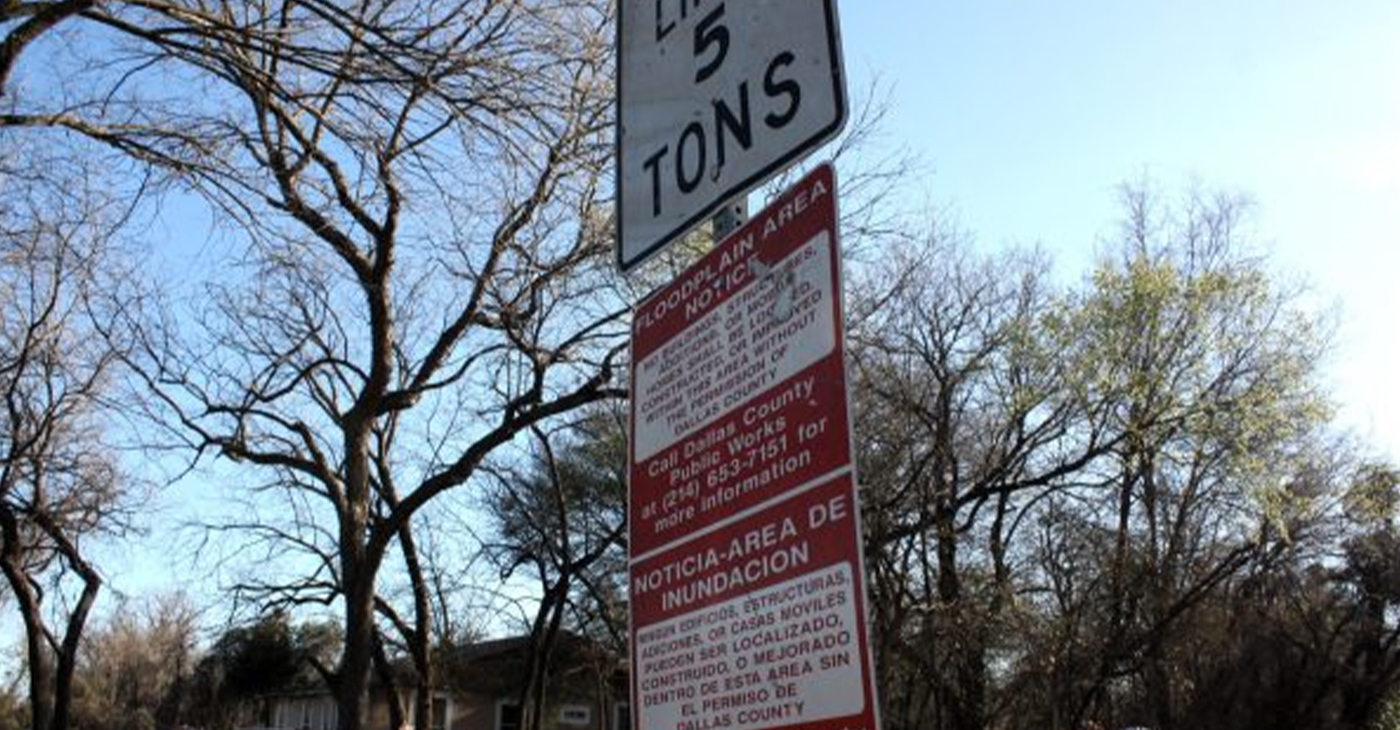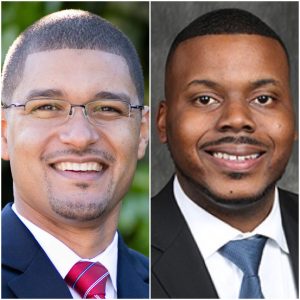#NNPA BlackPress
Solutions for Sandbranch & Deconstructing Environmental Racism
DALLAS WEEKLY MAGAZINE — Last year, DW reported on the ongoing fight for clean water in Sandbranch. As the issue has been repeatedly dismissed or forgotten by both current District 3 County Commissioner John Wylie Price and Texan politicians at large, political newcomer and candidate Derek Avery is taking part in a new charge to secure funding for infrastructure for the historic freedman’s town.
The post Solutions for Sandbranch & Deconstructing Environmental Racism first appeared on BlackPressUSA.

By Sam Judy | Dallas Weekly News
Last year, DW reported on the ongoing fight for clean water in Sandbranch. As the issue has been repeatedly dismissed or forgotten by both current District 3 County Commissioner John Wylie Price and Texan politicians at large, political newcomer and candidate Derek Avery is taking part in a new charge to secure funding for infrastructure for the historic freedman’s town. Likened to other Black communities across the country like Flint and Jackson, Sandbranch’s story is one of environmental racism in Dallas County.
In early March, donated water and food were distributed at Wayside Missionary Baptist Church in Sandbranch. The town has not had drinkable water since its well was contaminated over four decades ago.
Volunteers unload food donations for the residents of Sandbranch. Derek Avery and others unloaded pallets of water for residents as well.
Previously holding a population of over 500, numbers dwindled down to 400 in the early 2000’s, and then around 100 by 2010. The vast majority of Sandbranch’s population have fallen off in the past decades, either succumbing to old age or displacement as a result of harsher living conditions. Property taxes in Sandbranch have risen by 2531%.
The distribution comes a week after a community meeting to discuss plans to bring water to the historic Black town with a population of around 40 residents. Now, the community is working with various entities in civil engineering, the nonprofit sector, and the political sphere to ensure that Sandbranch is revitalized.
“This is a human rights issue. However, when you have four or five different groups saying they’re working for Sandbranch, what government alphabet soup is going to give us money? We’ve got to come together here in the community,” a community member says. “Until we get the Water Board, the Water Coalition, everyone to come together, we’re not going to get anything done.”
Healthy skepticism from the community was tangible during the meeting. And as residents spoke, the full weight of the challenges that they face began to take shape in the small Baptist church. Candidate Derek Avery took questions from the community with support from his civil engineer and advisor on the project, Logan Ortiz, to offer a clearer perspective of Sandbranch’s potential future. A major focus of the meeting: dismantling the established notion that there is no tenable solution to Sandbranch’s lack of drinkable water
“Because we’re in a floodplain, we can’t adversely impact the base flood elevation. So, the soil we remove in laying the pipelines would need to be disposed of.” Civil Engineer Logan Ortiz says. “We’d need to identify that soil for any contaminants, as well. […] And if there’s a bond available for a contaminant we find, that’s a green light and a slam dunk.”
Located in Unincorporated Dallas County near Seagoville, the incumbent County Commissioner of District 3 John Wylie Price has offered a singular solution for the residents of Sandbranch. Dallas County offers a buyout of $5000 for properties in the town, but most residents who have been displaced have been left with less than $500 after demolition costs. Regardless, the community has largely rejected this as an answer, pushing for infrastructure that can be typically expected by a taxpaying resident of Dallas County.
Community members spoke at the meeting as well, including Dallas activist Olinka Green, a former Black Panther/New Panther supporting the people of Sandbranch.
“Talking to the people of the community, they said that it has never flooded as long as they’ve been living there,” Green says. She also explained that many properties were placed in a land trust as owners were forced off property after failing to pay expenses to upshore houses due to the area’s classification as a floodplain. Additionally, the community has stated it has been defrauded by organizations claiming to fundraise for Sandbranch.
“And you have a lot of people in the community that have mistrust, because you have organizations that have come into Sandbranch and said they were going to do certain things. There has been money given for the people of Sandbranch, they never saw that money. These people haven’t been treated with respect.”
An area designated as a floodplain is typically under the consequence of environmental racism. As Black communities across the country suffer infrastructure issues due to increased risk of flooding, such as those in areas like Princeville, N.C. or Uniontown, Ala., classifications on the lack of overall viability are usually overstated. Workarounds exist, and specific approaches in civil engineering are present to ensure infrastructure can be provided. The highest hurdle for a town like Sandbranch is evoking sufficient political will.
“I’ve spoken to FEMA, and the biggest myth that’s told is that you can’t build in Sandbranch,” Avery says. “You don’t have to build above the base water, you can build pipelines and work around the environmental factors with different engineering approaches […] A floodplain is a common concept in environmental racism. This is definitely a problem of political will.”
When addressing environmental racism in Sandbranch, David Marquis of Dallas Water Commons gave further context:
“People who suffer the most environmentally are people of color. With a place like Sandbranch, part of the issue is simply the fact that the water most available to them is contaminated water,” Marquis says. “We have to acknowledge there’s been so much illegal dumping of so many different things in Southern Dallas for so long. There’s 63 square miles of unincorporated land in Southeast Dallas. People have dumped everything from tires to pollutants into the Trinity River. And water moves, it travels. We know that’s been a dumping ground for a long time.”
Additionally, many worry that Sandbranch is under threat of gentrification. As climate change has accelerated in recent years, Black communities around the country see increased risk of flooding. While sectors of West Dallas received levies to decrease flood risk, these developments overlapped with gentrification of the area in the last decades. The area’s current status as a floodplain leaving the area subject of restrictive regulation, residents are hoping developing infrastructure will lead to real community revitalization rather than further displacement.
“There’s three real options with regard to the water,” Civil Engineer Logan Ortiz says.“You could create a closed-loop system; we would do an environmental assessment to determine what that contamination is, and we’d find a location here and [establish] a water treatment facility, you’d be recycling the water that you use; you could run to an adjacent aquaphor in a different city, put in a water tower, and pay for water; or you can tap into the city.”
As tapping into city water would be most sensible, residents and members of the Water Board and Water Coalition have pledged support for candidate Derek Avery’s campaign, which names bringing water to the freedmen’s town as a key stance. Avery estimates a total cost of $12.5 million, with $8 million allocated for the project itself and $4.5 million set aside to cover residents’ water bills for 10 years.
The post Solutions for Sandbranch & Deconstructing Environmental Racism first appeared on BlackPressUSA.
#NNPA BlackPress
Chavis and Bryant Lead Charge as Target Boycott Grows
BLACKPRESSUSA NEWSWIRE — Surrounded by civil rights leaders, economists, educators, and activists, Bryant declared the Black community’s power to hold corporations accountable for broken promises.

By Stacy M. Brown
BlackPressUSA.com Senior National Correspondent
Calling for continued economic action and community solidarity, Dr. Jamal H. Bryant launched the second phase of the national boycott against retail giant Target this week at New Birth Missionary Baptist Church in Atlanta. Surrounded by civil rights leaders, economists, educators, and activists, Bryant declared the Black community’s power to hold corporations accountable for broken promises. “They said they were going to invest in Black communities. They said it — not us,” Bryant told the packed sanctuary. “Now they want to break those promises quietly. That ends tonight.” The town hall marked the conclusion of Bryant’s 40-day “Target fast,” initiated on March 3 after Target pulled back its Diversity, Equity, and Inclusion (DEI) commitments. Among those was a public pledge to spend $2 billion with Black-owned businesses by 2025—a pledge Bryant said was made voluntarily in the wake of George Floyd’s murder in 2020.“No company would dare do to the Jewish or Asian communities what they’ve done to us,” Bryant said. “They think they can get away with it. But not this time.”
The evening featured voices from national movements, including civil rights icon and National Newspaper Publishers Association (NNPA) President & CEO Dr. Benjamin F. Chavis Jr., who reinforced the need for sustained consciousness and collective media engagement. The NNPA is the trade association of the 250 African American newspapers and media companies known as The Black Press of America. “On the front page of all of our papers this week will be the announcement that the boycott continues all over the United States,” said Chavis. “I would hope that everyone would subscribe to a Black newspaper, a Black-owned newspaper, subscribe to an economic development program — because the consciousness that we need has to be constantly fed.” Chavis warned against the bombardment of negativity and urged the community to stay engaged beyond single events. “You can come to an event and get that consciousness and then lose it tomorrow,” he said. “We’re bombarded with all of the disgust and hopelessness. But I believe that starting tonight, going forward, we should be more conscious about how we help one another.”
He added, “We can attain and gain a lot more ground even during this period if we turn to each other rather than turning on each other.” Other speakers included Tamika Mallory, Dr. David Johns, Dr. Rashad Richey, educator Dr. Karri Bryant, and U.S. Black Chambers President Ron Busby. Each speaker echoed Bryant’s demand that economic protests be paired with reinvestment in Black businesses and communities. “We are the moral consciousness of this country,” Bryant said. “When we move, the whole nation moves.” Sixteen-year-old William Moore Jr., the youngest attendee, captured the crowd with a challenge to reach younger generations through social media and direct engagement. “If we want to grow this movement, we have to push this narrative in a way that connects,” he said.
Dr. Johns stressed reclaiming cultural identity and resisting systems designed to keep communities uninformed and divided. “We don’t need validation from corporations. We need to teach our children who they are and support each other with love,” he said. Busby directed attendees to platforms like ByBlack.us, a digital directory of over 150,000 Black-owned businesses, encouraging them to shift their dollars from corporations like Target to Black enterprises. Bryant closed by urging the audience to register at targetfast.org, which will soon be renamed to reflect the expanding boycott movement. “They played on our sympathies in 2020. But now we know better,” Bryant said. “And now, we move.”
#NNPA BlackPress
The Department of Education is Collecting Delinquent Student Loan Debt
BLACKPRESSUSA NEWSWIRE — the Department of Education will withhold money from tax refunds and Social Security benefits, garnish federal employee wages, and withhold federal pensions from people who have defaulted on their student loan debt.

By April Ryan
Trump Targets Wages for Forgiven Student Debt
The Department of Education, which the Trump administration is working to abolish, will now serve as the collection agency for delinquent student loan debt for 5.3 million people who the administration says are delinquent and owe at least a year’s worth of student loan payments. “It is a liability to taxpayers,” says White House Press Secretary Karoline Leavitt at Tuesday’s White House Press briefing. She also emphasized the student loan federal government portfolio is “worth nearly $1.6 trillion.” The Trump administration says borrowers must repay their loans, and those in “default will face involuntary collections.” Next month, the Department of Education will withhold money from tax refunds and Social Security benefits, garnish federal employee wages, and withhold federal pensions from people who have defaulted on their student loan debt. Leavitt says “we can not “kick the can down the road” any longer.”
Much of this delinquent debt is said to have resulted from the grace period the Biden administration gave for student loan repayment. The grace period initially was set for 12 months but extended into three years, ending September 30, 2024. The Trump administration will begin collecting the delinquent payments starting May 5. Dr. Walter M. Kimbrough, president of Talladega College, told Black Press USA, “We can have that conversation about people paying their loans as long as we talk about the broader income inequality. Put everything on the table, put it on the table, and we can have a conversation.” Kimbrough asserts, “The big picture is that Black people have a fraction of wealth of white so you’re… already starting with a gap and then when you look at higher education, for example, no one talks about Black G.I.’s that didn’t get the G.I. Bill. A lot of people go to school and build wealth for their family…Black people have a fraction of wealth, so you already start with a wide gap.”
According to the Education Data Initiative, https://educationdata.org/average-time-to-repay-student-loans It takes the average borrower 20 years to pay their student loan debt. It also highlights how some professional graduates take over 45 years to repay student loans. A high-profile example of the timeline of student loan repayment is the former president and former First Lady Barack and Michelle Obama, who paid off their student loans by 2005 while in their 40s. On a related note, then-president Joe Biden spent much time haggling with progressives and Democratic leaders like Senators Elizabeth Warren and Chuck Schumer on Capitol Hill about whether and how student loan forgiveness would even happen.
#NNPA BlackPress
VIDEO: The Rev. Dr. Benjamin F. Chavis, Jr. at United Nations Permanent Forum on People of African Descent
https://youtu.be/Uy_BMKVtRVQ Excellencies: With all protocol noted and respected, I am speaking today on behalf of the Black Press of America and on behalf of the Press of People of African Descent throughout the world. I thank the Proctor Conference that helped to ensure our presence here at the Fourth Session of the […]

Excellencies:
-

 Activism4 weeks ago
Activism4 weeks agoOakland Post Endorses Barbara Lee
-

 Activism4 weeks ago
Activism4 weeks agoOakland Post: Week of March 28 – April 1, 2025
-

 Activism3 weeks ago
Activism3 weeks agoOakland Post: Week of April 2 – 8, 2025
-

 #NNPA BlackPress3 weeks ago
#NNPA BlackPress3 weeks agoTrump Profits, Black America Pays the Price
-

 Activism2 weeks ago
Activism2 weeks agoOakland Post: Week of April 9 – 15, 2025
-

 #NNPA BlackPress3 weeks ago
#NNPA BlackPress3 weeks agoHarriet Tubman Scrubbed; DEI Dismantled
-

 #NNPA BlackPress3 weeks ago
#NNPA BlackPress3 weeks agoTrump Targets a Slavery Removal from the National Museum of African-American History and Culture
-

 #NNPA BlackPress3 weeks ago
#NNPA BlackPress3 weeks agoLawmakers Greenlight Reparations Study for Descendants of Enslaved Marylanders





















































